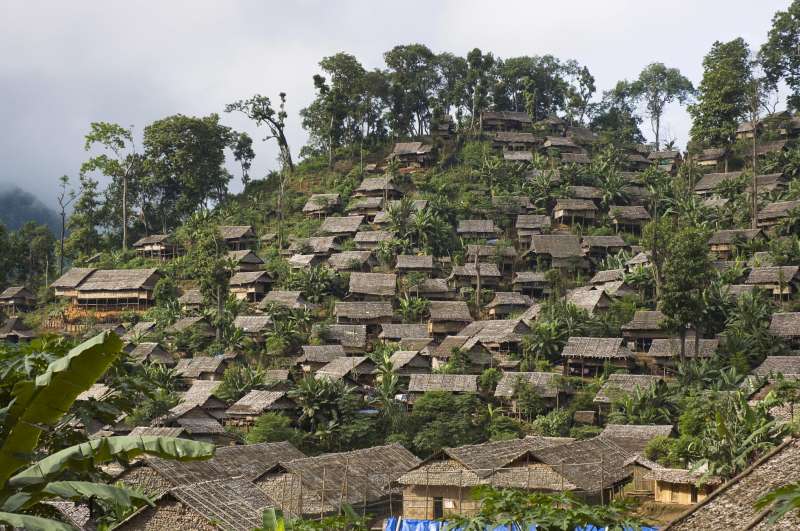In the world there are over 700 refugee camps. They represent the purest form a growing and global phenomenon, which reflects the mechanism of control and protection over undesirable populations.
General Information:
Every refugee camp is different because every situation is different
Population:
The number of people living in a camp depends on the crisis itself. When the number of refugees is in the hundreds of thousands, a few smaller camps with a population of no more than 20,000 are established than one big camp. In smaller camps it is easier to manage problems such as fire, security or the spreading of diseases.
Location:
Camps are usually situated on the edges of towns or cities, away from boarders and war zones.
Length of Stay:
Camps should be only temporary solutions, giving refugees a place to live until they can safely return to their country. They are not meant to become permanent homes or settlements. However, refugees often have to live in the camps for much longer than expected.
In Albania, refugees from Kosovo lived in camps for only three months, while refugees from Somalia have been living in camps in Kenya since 1991.
Camp Advantages:
•Provides asylum and protection
•Easier to find out how many people live there, and what they need
•Some Basic services are easier to organise (e.g. food distribution, vaccinations)
suitable for temporary situations
suitable for temporary situations
Camp Disadvantages:
•Too many people increase the risk of spreading diseases
•People are dependent on aid coming to them from the world
•Isolation and not much to do
•Degradation of the surrounding environment
•Security problems within the camp
•Security problems within the camp
Accommodation and
shelter
Materials:
Shelter
for refugees are usually made of local materials such as wood, metal sheets,
tree branches
or plastic. When possible, refugees build their own houses. Shelters usually have stoves for heating
and cooking. In warm climates cooking facilities are often outside.
or plastic. When possible, refugees build their own houses. Shelters usually have stoves for heating
and cooking. In warm climates cooking facilities are often outside.
Space:
The
minimum shelter space recommended is 3.5 square meters per person in warm
climates where
cooking is done outside, and 4.5 to 5.5 square meters in cold climates where indoor kitchen and
bathing facilities are needed. The minimum distance between shelters should be two meters.
cooking is done outside, and 4.5 to 5.5 square meters in cold climates where indoor kitchen and
bathing facilities are needed. The minimum distance between shelters should be two meters.
Tents:
In
emergency situations or if local materials are not available, tents are often
used. Refugees should
be able to sand in all areas of the tent without their heads on the ceiling. Tents last two to three
years.
be able to sand in all areas of the tent without their heads on the ceiling. Tents last two to three
years.
The
Organisation of Shelters
The
best method is to organise the camp into smaller units where each unit has its
own community
facilities such as toilets, water points and washing areas.
facilities such as toilets, water points and washing areas.
Drink
Quantity:
It
depends on the climate and on the habits of the location. In order to survive, people need to
drink 4 to 5 litres a day. But water also needed for cooking, washing the dishes and clothes and
personal hygiene, so ten litres per person a day is seen as minimum.
drink 4 to 5 litres a day. But water also needed for cooking, washing the dishes and clothes and
personal hygiene, so ten litres per person a day is seen as minimum.
Water
Point:
There
should be at least one place to get water for every 200 to 250 refugees.
Shelters should be no
more the 100 meters from water point
more the 100 meters from water point
Facilities:
Facilities
of a refugee camp can include the following:
•An
administrative headquarters to coordinate services
•Sleeping
accommodations (frequently tents)
•Hygiene
facilities (washing areas and latrines or toilets)
•Clinics,
hospitals and immunisation centers
•Food
distribution and therapeutic feeding centers
•Communication
equipment (e.g. radio)
•Security,
including protection from banditry (e.g. barriers and security checkpoints) and
peacekeeping troops to prevent armed violence
•Places
of worship
•Schools
and training centers (if permitted by the host country)







Very Informative and genuien information you posted.As you describe all the aspects is really recommendable.
ReplyDeleteinflatable tents | refugee tents